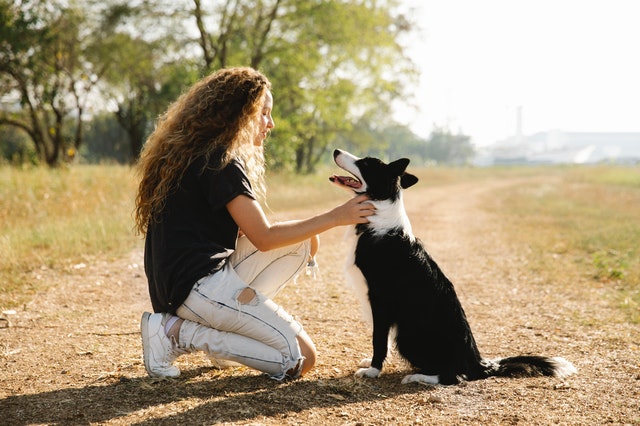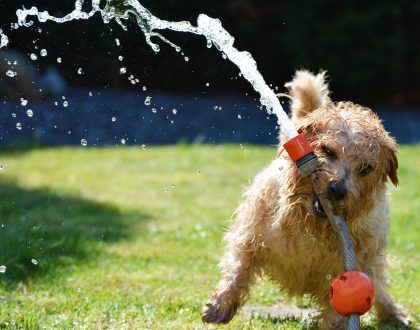Body Language Of Dogs

How to Read Your Dog’s Body Language
Using body language, your dog has a unique, non-verbal way of communicating with you. Your fur baby may use its eyes, ears, mouth, tail, and body posture to signal something.
Deciphering your dog’s body language is one of the aspects of responsible ownership. So as a dog owner, you should be able to read these signals to communicate with your canine correctly.
Tail Wagging
Dogs communicate broader messages using their body language. Tail wagging works well with them.
Since a dog’s vision is tuned more to movement than details or colours, your canine companion readily discerns different tail wags.
It is well-documented that the direction of the wag signifies that your canine companion is experiencing strong emotions.
When your dog tends to wag more to the right, it means that it feels optimistic about something and likes to interact with you. Meanwhile, if your fur baby’s tail wags more to the left, it may be feeling something negative.
Before you start observing how your dog’s tail wags, you must first recognize that the natural position of a dog’s tail differs by breed.
Most breeds have their tails hanging down near their heels when they’re in a relaxed position. But others like beagles hold their back ends more vertically. Meanwhile, Boston terriers and pugs have tails that coil tightly against their bodies and don’t wag at all.
Other Indications of Tail Wagging
Preparedness or Agitation
Dogs stand when they’re alert. Their tails are raised, and their ears are up. When you notice your dog in that posture, it means that it’s watching and ready to confront whatever it is that caught its attention.
Negotiation
When you notice that your canine companion’s tail suddenly stops wagging, it may mean that it wants to divert a threat without being aggressive. Many dogs do this when a stranger pets them.
Aggression
When your dog’s tail moves from a neutral position and arches over the back, it may indicate aggressiveness.
The high tail position also releases more of your dog’s scent from the anal glands, announcing its arrival and marking its territory. So the higher the tail is raised, the greater the threat.
Submission
When you notice your fur baby’s tail moves from a neutral position to a lower one, it means it’s submissive.
Observe when it does something that makes you angry. If its tail is tucked tightly between the rear of its legs, it signals that your fur baby is scared. It’s like your dog is begging you to spare the rod.
Curiosity
When your fur baby is curious about something, it holds its tail straight out in a horizontal position.
Can Tailless Dogs Communicate?
Dogs without tails can also communicate, but they have limitations. They may use their facial expression to signal their intentions.
Eye Movement
You may learn a lot about your fur baby’s internal state by looking at its eyes. Soft eyes have open lids. Sometimes when you notice that your dog seems squinting, it may indicate that it’s happy or calm.
If your dog’s eyes seem to go cold, it may indicate a negative state of mind. Your fur baby may be feeling aggressive or guarding a toy.
A hard stare, where your canine companion looks intently at something for a long time, usually signals a threat.
Meanwhile, looking away may indicate that your dog is trying to calm the situation. Your fur baby may also avoid eye contact to express discomfort if it’s stressed about something.
If you notice something unusual in your fur baby’s behaviour, it may be an indication that your dog doesn’t feel well. If it looks hurt, you may try alternative methods to alleviate pain.
You may give your canine companion massage therapy by applying essential oils to its skin. Just ensure that your dog is calm before you start massaging it. It will also help if you consult with your vet first.
Facial Expressions
It is reported that humans can correctly identify emotional expressions in dog faces by looking at their photos.
Does your fur baby do a “puppy eye” when you look at it? It is well-documented that dogs display more facial expressions when humans pay close attention to them.
Their expressions include making their eyes appear bigger, tilting their heads, and raising their eyebrows.
The study suggests that dogs’ expressions aren’t merely the result of internal emotions. Still, they can also be a method of communication.
However, the researchers didn’t clarify what the dogs might communicate or whether their movements were intentional.
Conclusion
Although dogs are incapable of communicating with humans verbally, they use other body language methods to signal what they want and feel.
They wag their tails, show specific body postures, and even use facial expressions to convey their intentions.
You need to know all these things so you can give your dog the proper care and attention it needs.
References
1. Interpreting Tail Wags in Dogs
https://vcahospitals.com/know-your-pet/interpreting-tail-wags-in-dogs
2. Asymmetric tail-wagging responses by dogs to different emotive stimuli
https://www.cell.com/current-biology/fulltext/S0960-9822(07)00949-9?_returnURL=https%3A%2F%2Flinkinghub.elsevier.com%2Fretrieve%2Fpii%2FS0960982207009499%3Fshowall%3Dtrue#relatedArticles
3. Identifying facial expressions in dogs: A replication and extension study
https://pubmed.ncbi.nlm.nih.gov/33652087/
4. Human attention affects facial expressions in domestic dogs
https://www.nature.com/articles/s41598-017-12781-x

Author’s Bio:
Fay Smith’s an advocate of all things natural, she tried CBD when friends recommended it for common aches and pain. Her interest in radiology started when she first became pregnant. Now she regularly contributes to W-Radiology.com
Going Away?
To ensure that your dog is in good hands when you go away, book with one of our wonderful, carefully-screened dog minders who will welcome him or her into their home. Click here to find out more.
Recommended Posts

Lickimat – 20% OFF
February 27, 2024

Hot weather and your dog
January 05, 2024

Frozen Kong recipes
January 05, 2024
